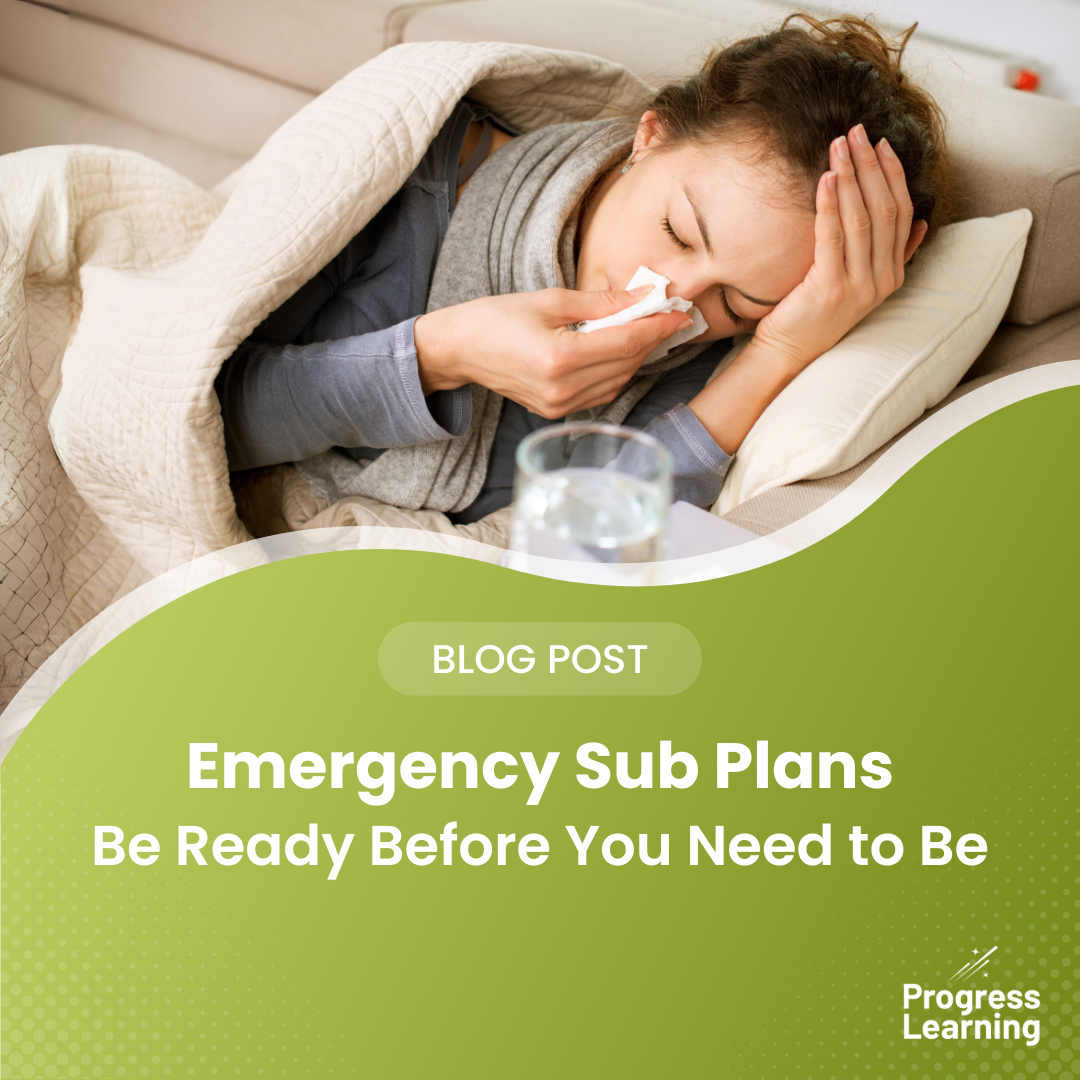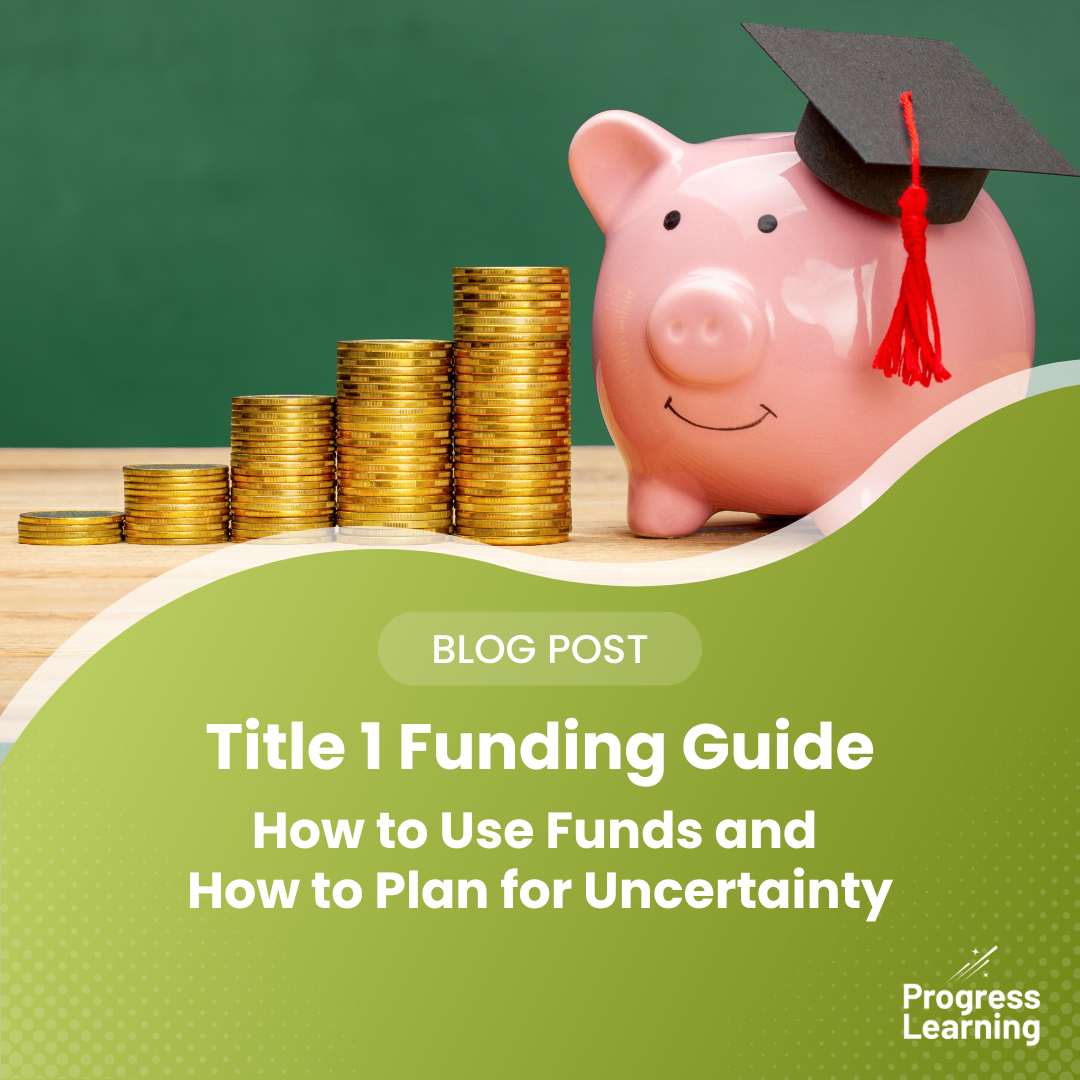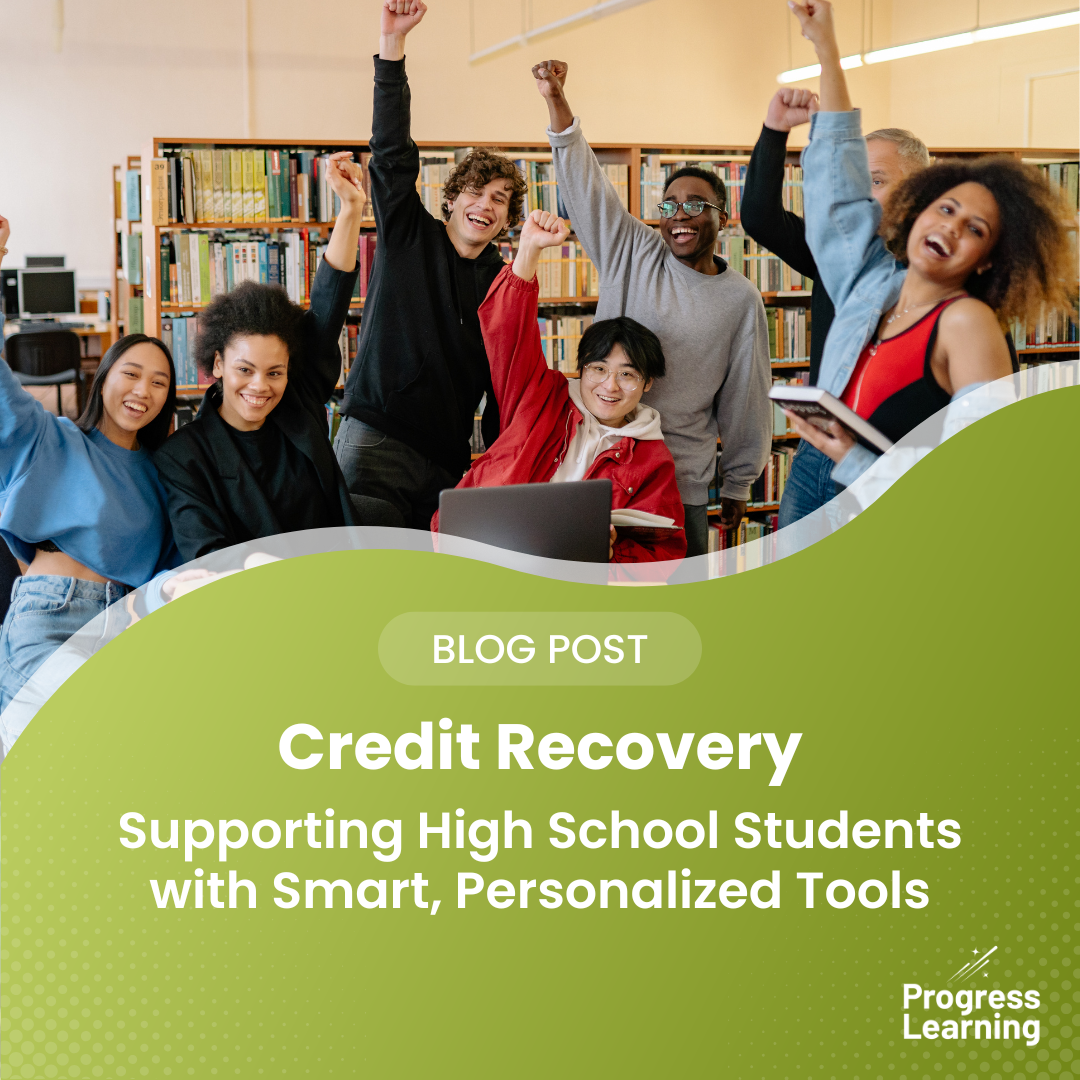Implementing SEL Strategies in the Classroom
Table of Contents:
- Self-Awareness and How to Implement it in the Classroom
- Self-Management and How to Implement it in the Classroom
- Social Awareness and How to Implement it in the Classroom
- Relationship Skills and How to Implement it in the Classroom
- Responsible Decision-Making and How to Implement it in the Classroom
The social and emotional well-being of students is more important than ever. Social Emotional Learning (SEL) equips young people with essential skills that not only enhance their academic performance but also prepare them for life’s challenges.
Integrating SEL into the classroom, however, can be challenging. This blog post explores the 5 core competencies of SEL, how to implement them in your classroom, and how a solution like Progress Learning can help.
What Is Social and Emotional Learning?
Social and Emotional Learning (SEL) refers to young people and adults’ ability to develop knowledge, skills, and attitudes that will help them develop healthy identities, manage their emotions in a healthy way, achieve their goals, establish and maintain supportive relationships, feel empathy, and make decisions that are both responsible and caring toward the needs of others.
CASEL has created an SEL framework that schools, districts, states, and others can use to foster social and emotional competence. This framework is divided into 5 core competencies. They’re numbered here for organizational purposes, but according to CASEL, no one competency takes precedence or importance over another.
Let’s take a look at each one and see how they can be implemented in the classroom.
1. Self-Awareness
The CASEL framework describes self-awareness as the ability “to understand one’s own emotions, thoughts, and values and how they influence behavior across contexts.” This includes the ability to recognize one’s own strengths and limitations while maintaining confidence and a sense of purpose. Students who cultivate self-awareness can better understand how their emotions, thoughts, and values shape their behavior, which helps them navigate various aspects of their lives with greater confidence.
Self-awareness looks like:
- Being able to identify one’s own emotions, thoughts, and needs
- Labeling and recognizing emotions
- Examining personal biases
- Understanding how emotions affect behavior
- Recognizing strengths and areas of weakness to see where growth is needed
- Building self-confidence and optimism
Strategies to Implement Self-Awareness in the Classroom
To help students develop self-awareness, educators can:
- Provide tools for identifying emotions and needs, and encouraging discussions around them
- Model self-awareness by outwardly expressing emotions
- Help students understand how emotions affect behavior
- Recognize students’ strengths and celebrate them
- Use data to help students identify areas for improvement and set goals
- Create an environment where growth is encouraged and celebrated
- Create individualized learning plans so students can focus on their areas of weakness
Using Progress Learning to Promote Self-Awareness
Elementary Students: Individualized Learning Plans
All elementary students receive an individualized Learning Plan in Progress Learning and Liftoff. Students are able to self-manage their own areas of strength as well as their learning challenges through diagnostic assessments. They are able to recognize their strengths and reach even greater success mentally and emotionally by knowing which academic goals to focus on.
Secondary Students: Assignment Results Page
For secondary students, the Results Page empowers them to take ownership of their learning and identify their academic challenges. Students can view all the activities they have completed and their scores. They are able to self-manage their own areas of strength as well as their learning challenges. If the teacher allows it, students can retry an assignment and compare their original score to their retry score.
2. Self-Management
Self-management refers to the ability to regulate one’s emotions, thoughts, and behaviors in various situations to achieve personal goals and aspirations. Formal education provides students with structure, but it’s crucial for young people to also develop their own self-discipline and motivation. Self-management helps students continue progressing even when no one is holding them accountable but themselves.
Self-management looks like:
- The ability to regulate and express emotions in a productive way
- Being able to overcome challenges and persevere through difficult situations
- Establishing and maintaining healthy boundaries
- Accepting and incorporating constructive criticism
- Effective goal setting
- Self-advocacy
Strategies to Implement Self-Management in the Classroom
To help students develop self-management, educators can:
- Establish a safe space for students to express themselves
- Provide growth opportunities that are in line with students’ individual needs
- Monitor students using Depth of Knowledge (DOK) assessments
- Provide opportunities for students to engage in constructive peer feedback and collaboration
- Work with students to set, monitor, and reach realistic goals
- Offer one-on-one check-ins for students to voice their concerns
Using Progress Learning to Promote Self-Management
Elementary Students: Galaxy Stars
With Progress Learning, all students can see their own growth and feel success! Elementary students work to earn Galaxy Stars to show that they have fully mastered a standard. They can earn up to 3 Galaxy Stars based on their performance: 1 star for 70% mastery, 2 stars for 80% mastery, and 3 stars for 100% mastery.
Secondary Students: Progress Report with Dot Rank
Secondary students can use our colorful Dot Rank system to identify their areas of weakness. Then, they can do independent practice in those weak areas (indicated by pink and yellow dots) and work to earn green dots to show they have fully mastered a standard. They can also earn a gold star when they complete all the practice for that standard.
3. Social Awareness
Social awareness refers to the ability to understand and empathize with others, especially those from diverse backgrounds, cultures, and contexts. It helps young people understand broader historical and social norms and develop compassion. When students learn to consider others’ perspectives and recognize their strengths, show empathy and concern for the feelings of others, and identify diverse social norms — including those that are unjust — they become more responsible citizens of the world.
Social awareness looks like:
- Recognizing and empathizing with others’ emotions and perspectives
- Recognizing strengths in others
- Demonstrating empathy and compassion
- Showing concern for the feelings of others
- Developing and expressing gratitude
- Recognizing situational demands and understanding the influences of organizations and systems on behavior
Strategies to Implement Social Awareness in the Classroom
To help students develop social awareness, educators can:
- Encourage students to consider and discuss different perspectives
- Provide opportunities to celebrate diverse cultures and experiences
- Develop classroom activities that focus on gratitude and empathy
- Create collaborative projects where students can recognize one another’s strengths
- Establish classroom norms that reflect fairness and respect for all
- Discuss historical and current social norms, especially around justice and equity
Using Progress Learning to Promote Social Awareness
Elementary Students: Alien Ranking Cards
Our Alien Ranking Cards allow students to celebrate and encourage one another to be their best. As students grow and master standards, they unlock new Alien Ranking levels, which also unlock other fun and exciting rewards. Many schools have creative bulletin boards to visually celebrate each student’s progress. Students are always very excited to cheer on their friends when they get to move their name up to a new level.
Secondary Students: The Green Dot Challenge
Our Green Dot Challenge helps students see progress made and aspire to reach new levels as a class and as a school. Teachers use progress monitoring to set achievable goals for each student. As students master standards and earn green dots, they contribute to the collective progress of their class or school. The Green Dot Challenge fosters healthy competition and teamwork. It also makes learning fun!
4. Relationship Skills
Relationship skills encompass the ability to establish and maintain healthy, supportive relationships while effectively navigating interactions with diverse individuals and groups. Research shows that children who develop strong emotional intelligence and relationship-building skills are more likely to succeed in education, careers, interpersonal relationships, and even romantic partnerships.
Relationship skills look like:
- Effective communication and active listening
- Developing meaningful, supportive relationships
- Demonstrating leadership, teamwork, and collaborative problem-solving
- Resolving conflicts constructively
- Resisting negative social pressure
- Offering and seeking help when needed
Strategies to Implement Relationship Skills in the Classroom
To help students develop relationship skills, educators can:
- Encourage group projects and peer collaboration to develop teamwork
- Teach active listening and constructive communication techniques
- Create classroom norms that emphasize respect, inclusivity, and equity
- Provide opportunities for students to engage in conflict resolution role plays
- Encourage leadership roles among students to promote responsibility and cooperation
- Use peer feedback sessions to help students give and receive constructive criticism
Using Progress Learning to Promote Relationship Skills
All Grade Levels: Student/Teacher Chat
Our teacher chat and video messaging feature promotes relationship-building between students and teachers. Teachers can connect with each student individually and confidentially to check on their social and emotional well-being. As teachers assign work, they can send personalized messages of encouragement or praise, which students receive before starting the assignment.
5. Responsible Decision-Making
Responsible decision-making involves the ability to make caring, constructive choices about personal behavior and social interactions across a variety of situations. This skill is critical for helping young people navigate challenges, make thoughtful assessments of outcomes, and keep themselves and those around them safe. Educators can play a central role in guiding students to evaluate the personal, interpersonal, community, and institutional impacts of their decisions.
Responsible decision-making looks like:
- Demonstrating curiosity and open-mindedness
- Making reasoned and ethical judgments
- Understanding potential consequences and weighing risks
- Identifying and evaluating solutions to problems
- Reflecting on one’s role and influence within a community
- Balancing personal interests with the well-being of others
Strategies to Implement Responsible Decision-Making in the Classroom
To help students develop responsible decision-making, educators can:
- Encourage students to reflect on potential consequences before making decisions
- Use role-playing scenarios to practice decision-making in real-life contexts
- Encourage critical thinking and problem-solving activities
- Provide opportunities for students to analyze the ethical aspects of decisions in various contexts, such as social, environmental, and community issues
- Do activities where students must choose between multiple solutions, allowing them to evaluate and justify their decision
- Allow students to lead discussions on how their actions impact both their immediate environment and the larger community
Using Progress Learning to Promote Responsible Decision-Making
Elementary Students: Embedded Games
Our games help elementary students develop the ability to make constructive choices. After they answer a question correctly, students celebrate their success by playing a fun 20-second game. They can also track their progress and work toward earning more Galaxy Stars. Galaxy Stars allow students to unlock other engaging features like more games, blasters and rockets for their games, and higher Alien Ranking Cards. Students have the opportunity to problem-solve and do their best on the first attempt when answering questions.
Secondary Students: Independent Practice
Secondary students can take responsibility for their own academic progress through independent practice. With access to Study Plans, assignments, assessments, and Graded Work (including remediation assignments), students are empowered to identify their areas of weakness and choose what to work on. This process promotes autonomy and reinforces their ability to make responsible decisions about their learning.
Making SEL Integration Easier
Incorporating these 5 core SEL competencies into your classroom can be challenging, but it is crucial. A recent EdWeek survey found that 83% of educators noted the positive impact of SEL on students’ academic success, while 84% observed improvements in essential “soft skills” such as communication, collaboration, and critical thinking.
Fortunately, there are various strategies and solutions that can make integrating SEL easier. As outlined above, solutions like Progress Learning can help educators and schools create a supportive culture that prioritizes SEL and prepares students for success in and out of the classroom.
Watch this recorded webinar to see how to incorporate Social and Emotional Learning in academic instruction!
Interested to learn more about how Progress Learning can support your SEL efforts? Request a demo of Progress Learning today!


